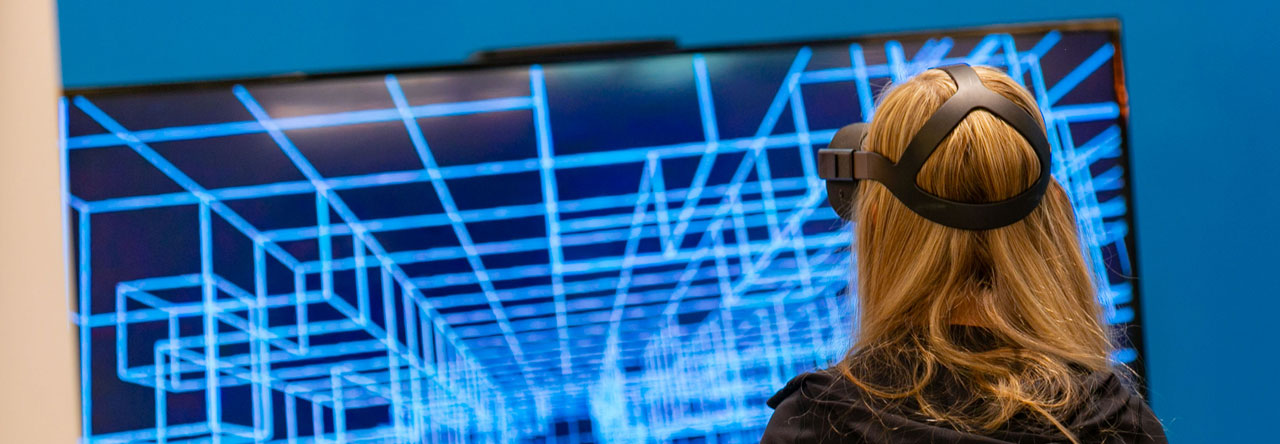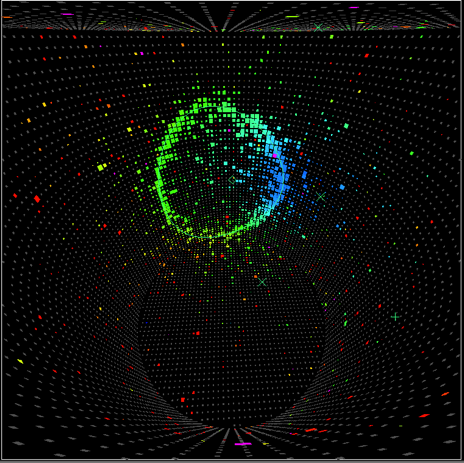Whether traipsing through the Duke Forest in search of a specific species of moss, using tiny scissors to dismember fruit fly larvae, or spicing up learning styles with celebrity memes and puppies, the quest for knowledge has led Duke students to some interesting pastimes.

Inquisitive students shared their research stories with peers at Visible Thinking 2016
On April 20, those inquisitive students and their faculty mentors gathered to share their stories at Visible Thinking 2016, the annual poster session showcasing undergraduate research from across Duke’s campus.
More than 130 presentations extended to all three floors of the Fitzpatrick/CIEMAS Atrium and featured research subjects spanning from monkey flowers and color-changing chemicals to cardinal numbers and the death of Odysseus.
“As researchers, we are all working on problems that we find fascinating,” said Nina Sherwood, associate professor of the practice in the biology department and advisor to two of the student presenters. “There’s an appeal to seeing others get bitten by the same research bug and feeling that same excitement!”

Over 130 posters lined all three levels of the Fitzpatrick/CIEMAS atrium during Visible Thinking on Wednesday.
Duke junior Ben Brissette’s passion to help people with mental and physical disabilities couldn’t be contained in just one project, so he did two.
The neuroscience major split his time between Sherwood’s biology lab, where he bred fruit flies and dissected their babies in search of nervous system abnormalities, and the library, where he surveyed recent literature on special education reform.
Brissette said the two approaches – one quantitative and reductionist, the other qualitative and complex – gave him a more nuanced perspective on the issue of disability.
And he had to learn to take each at its own pace.
“With a literature review, if you want to read for forty hours straight you can,” he said. “But if you are working with flies, you abide by their schedule.”
Brissette wasn’t the only student pulling double duty on Wednesday. Junior Logan Beyer bounced between two posters as well; one on her psychology research, examining differences the brain’s response to noise in typical children and children with autism spectrum disorder, and the other on her work with the Thompson Writing Program, designing a website to help students with learning disabilities tackle the writing process.

Two students ponder a research question during a quiet moment at the event.
Junior Abi Amadin became curious about her research subject while entering data for a large survey on stress as part of her work study position in the Department of Community and Family Medicine. What caught her eye was a measure called the household Confusion, Hubbub, and Order Scale CHAOS. Chaos in the home is a factor that can negatively impact childhood development.
So Amadin asked if she could analyze some of the data for herself, and found some interesting results: in the families surveyed, household measured chaos was correlated not with income or the number of people in a household, as expected, but with the number of children in the household.
“It was interesting to see the process that you go through in research – first posing a question, and then figuring out how to analyze it.” said Amadin. “I definitely learned a lot.”
According to Sherwood, students aren’t the only ones who learn from the experience.
“Undergraduates researchers are great because they bring fresh eyes and a fresh outlook,” Sherwood said. “From them we get some questions that are naïve, and others that are quite profound, but both force us to think and talk about our work in a bigger context.”

Post by Kara Manke







